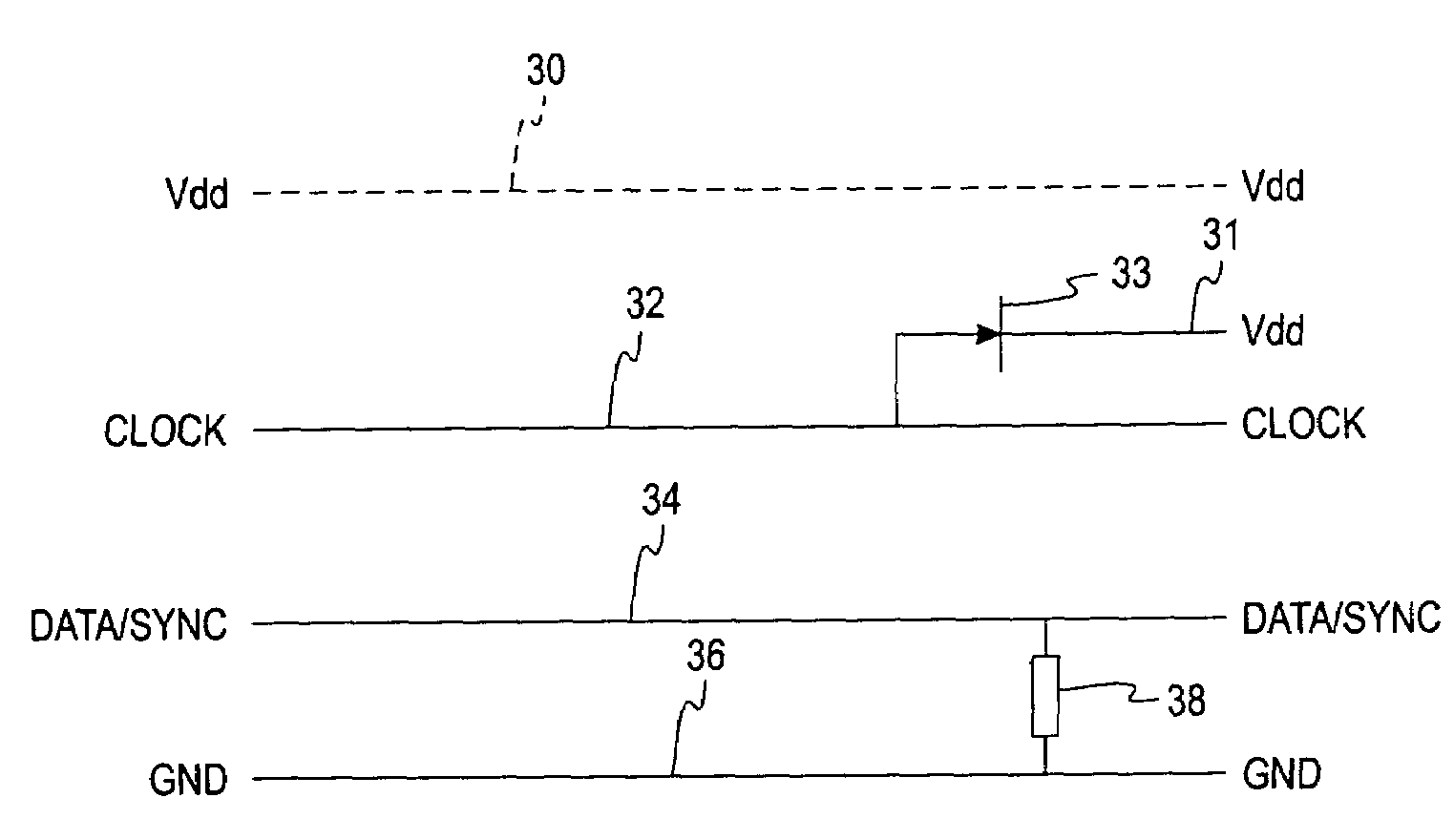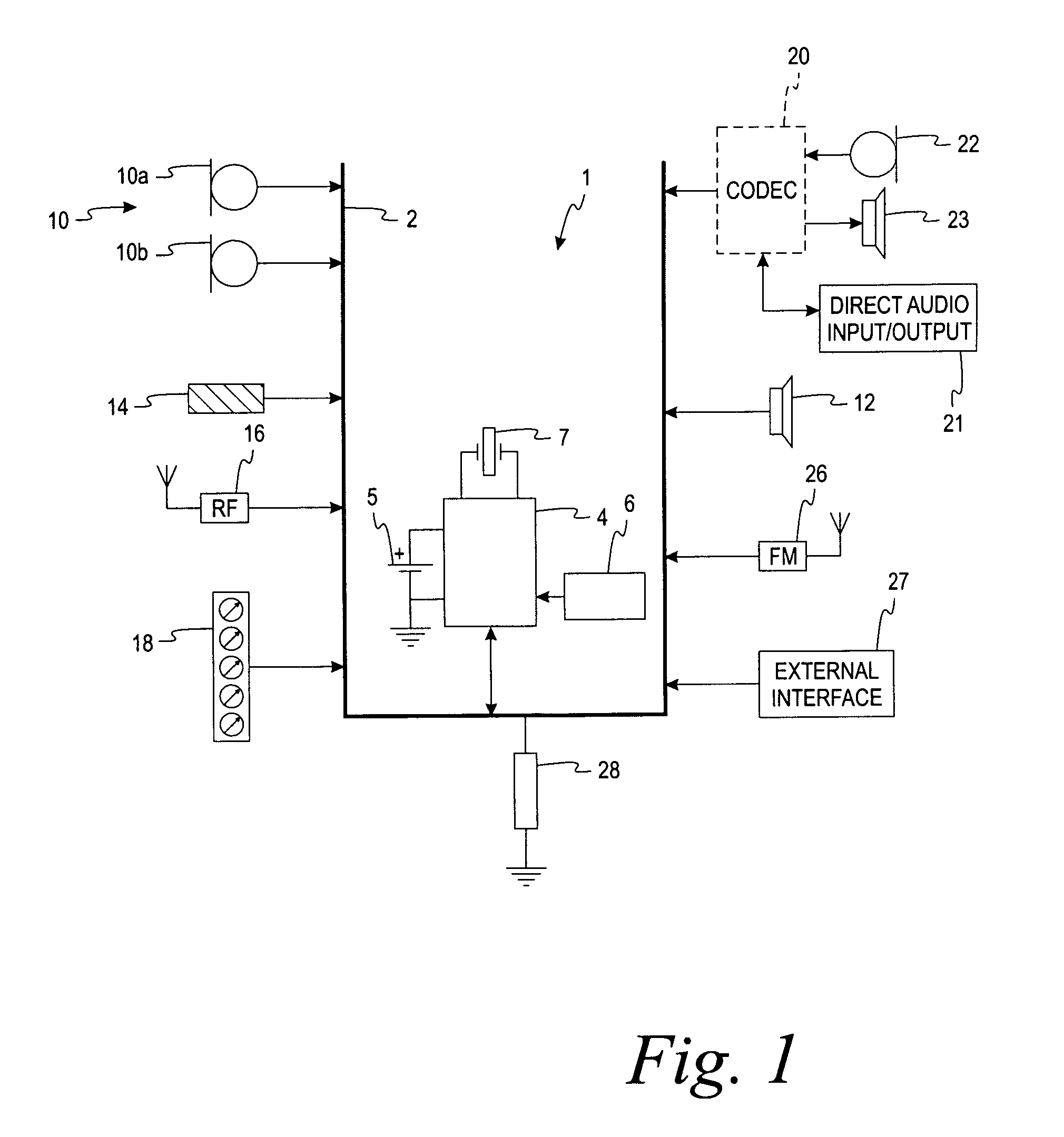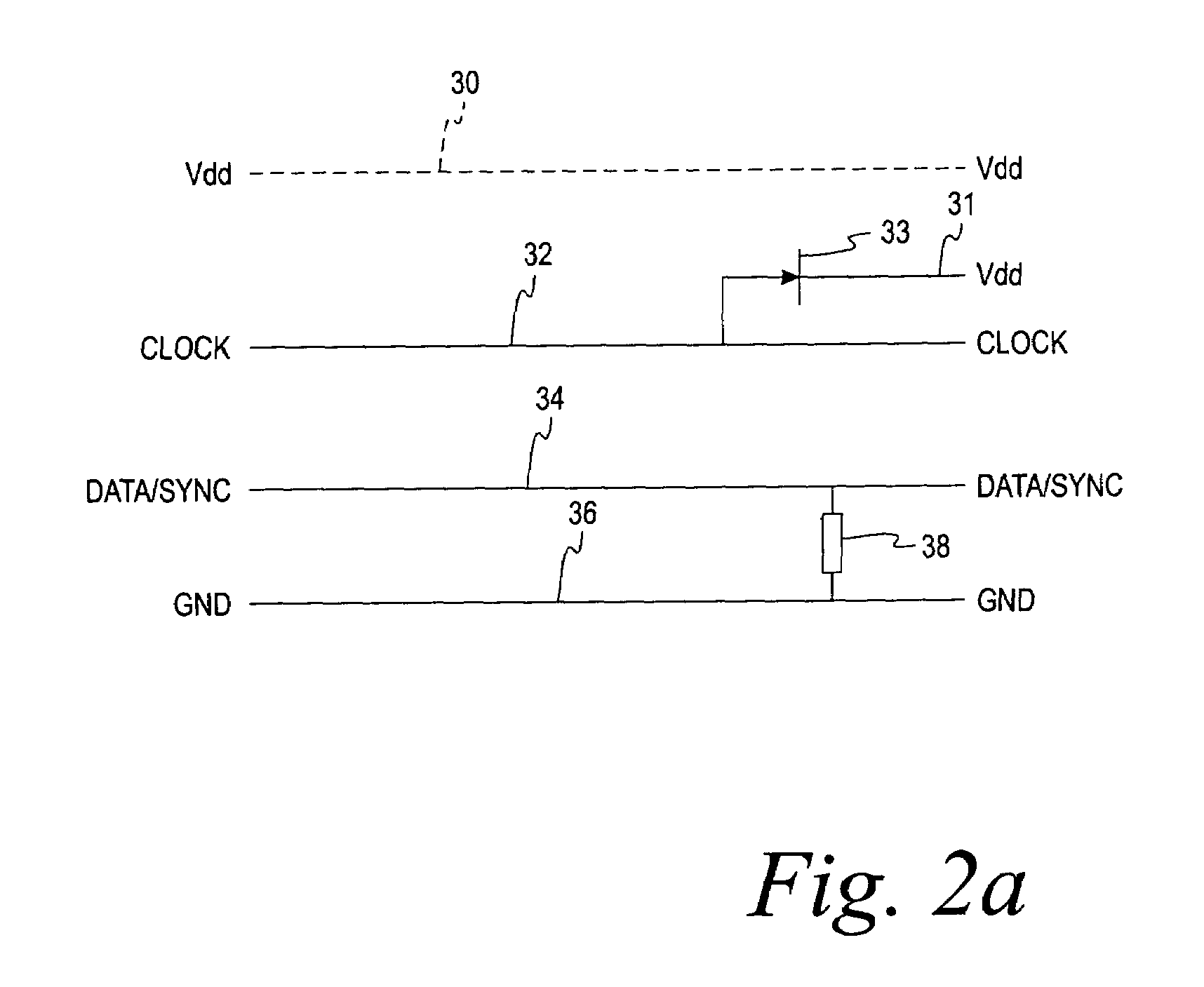Digital system bus for use in low power instruments such as hearing aids and listening devices
a low-power, system bus technology, applied in the field of low-power, low-voltage system bus, can solve the problems of the total power consumption of the system bus alone in the range of about 30 microwatts to about 1 mw, and achieve the effects of avoiding compromising the bus speed, low power consumption, and fast response tim
- Summary
- Abstract
- Description
- Claims
- Application Information
AI Technical Summary
Benefits of technology
Problems solved by technology
Method used
Image
Examples
embodiment a1
[0146]A hearing instrument comprising at least one master component, at least one peripheral component and a system bus connected therebetween, the system bus including a plurality of lines, at least one of the lines being a composite line which is adapted to carry more than one digital signal between the at least one master component and the at least one peripheral component in the hearing instrument.
embodiment a2
[0147]The hearing instrument of embodiment A1, wherein the plurality of lines contains the composite line, a first line, and a second line.
embodiment a3
[0148]The hearing instrument of embodiment A1, wherein the composite line is adapted to carry two digital signals selected from the group consisting of a reference signal, a clock signal, a power signal, a synchronizing signal, and a data signal.
PUM
 Login to View More
Login to View More Abstract
Description
Claims
Application Information
 Login to View More
Login to View More - R&D
- Intellectual Property
- Life Sciences
- Materials
- Tech Scout
- Unparalleled Data Quality
- Higher Quality Content
- 60% Fewer Hallucinations
Browse by: Latest US Patents, China's latest patents, Technical Efficacy Thesaurus, Application Domain, Technology Topic, Popular Technical Reports.
© 2025 PatSnap. All rights reserved.Legal|Privacy policy|Modern Slavery Act Transparency Statement|Sitemap|About US| Contact US: help@patsnap.com



